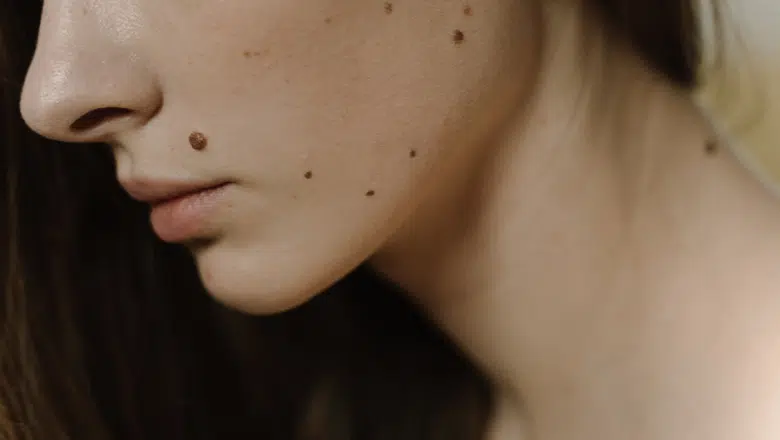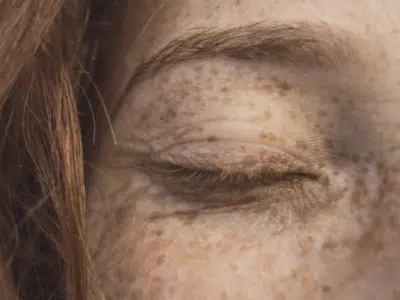Itchy or bleeding moles can result from scratching them or when they have become irritated, such as when caught on clothing items, scratching insect bites or razor cuts during shaving. Certain types of hair removal may traumatise moles and cause them to bleed. Moles that are itchy or bleeding may also be a sign of possible skin cancer.
Some recognised features may signify a mole that has become cancerous and could be a possible melanoma. We recommend seeking an urgent assessment from a plastic surgeon skilled in diagnosing and treating skin cancer. If you have noticed any change in your moles, such as a change in shape, colour, irregularity of border or they are bleeding or itchy, it’s important to get this assessed at the earliest opportunity as early diagnosis of skin cancer has a higher likelihood of successful treatment. Mole removal in London is one of the most popular procedures at Centre for Surgery.
It is good practice to have moles regularly checked every year or as recommended by a skin specialist, particularly if you have a previous history of moles that have developed cancerous changes or have been treated for skin cancer. We cannot emphasise enough that an early and accurate diagnosis is fundamental in optimising treatment outcomes. Late diagnosis of moles that have become cancerous may result in potentially life-threatening outcomes. If you are in any doubt about the appearance of your moles or if they have become itchy or are bleeding, it is best to get them checked out as soon as possible.
What does a cancerous mole look like?
Moles that have become cancerous often have characteristic clinical features that are specifically looked for by a plastic surgeon, including:
- Asymmetrical appearance – moles that look different on one side may be a feature of cancerous changes.
- Change in size – abnormal moles may often in large compared with normal moles and may have colour changes within the mall, including the appearance of pink patches within a non-uniform black or brown colour.
- Irregular borders – cancerous moles often have irregular margins compared with the smooth margins of a normal mole.
If any of the above symptoms apply to you and you have developed bleeding or itchiness in your mole, we would recommend an urgent clinical assessment by a specialist dermatologist. Here at Centre for Surgery, we offer the full range of mole removal treatment options, including surgical removal with biopsy. Contact us at 020 7993 4849 or fill out the contact form below.
Should I be concerned if I cut my mole?
People who attempt to cut a mole may develop persistent bleeding which may result in prolonged healing times. If the mole is cut away from the skin, then this could result in significant bleeding which requires urgent medical attention. We would strongly advise against attempting to remove moles yourself as this could increase the risk of developing an infection and unsightly scarring.
Why should I avoid picking at my mole?
People who pick a mole may develop localised bleeding, which could result in pain and discomfort. Although picking a mole is not linked with the development of skin cancer, persistent picking may result in delayed wound healing, and this could result in abnormal scarring. Sometimes, the scarred appearance of a mole that has been picked at may resemble a malignant melanoma. We would advise against picking your mole.
RELATED: Different types of scars
Is an itchy mole potentially serious?
In most cases, moles that feel itchy are unlikely to be symptoms of potential skin cancer, as certain activities such as shaving or persistent rubbing may result in itchiness. If a mole is very itchy or symptoms of itchiness are getting worse over time, particularly if it starts to bleed or crust over, this should be assessed by a specialist as there could be potentially cancerous changes developing in the mole. A mole check is an effective way of assessing potentially cancerous moles and is regularly carried out at our Baker Street clinic in London.
What causes my mole to feel itchy?
Itchy moles are commonly due to inflammatory changes which result in the stimulation of nerve endings beneath the skin. Other causes may include excessively dry skin or a localised injury to the skin. As explained earlier, the itch of a mole is unlikely to be due to skin cancer if it is the only symptom, but in some cases, malignant skin cells may cause irritation of the nerve endings within the mole. It is important to determine the character of the itchiness when deciding if it is a potentially serious symptom. Itchiness that develops suddenly and settles down fairly quickly is usually the result of a localised injury to the skin and has a low risk of being associated with skin cancer. However, we would recommend having a mole checked by a skin specialist if your mole does itch to be on the safe side.
Can a mole become cancerous from scratching it?
Moles are not known to become cancerous simply from scratching, although a cancerous mole may be particularly itchy. Certain symptoms, including significant or persistent itchiness, bleeding, or discomfort, should trigger an assessment by a plastic surgeon. A comprehensive skin cancer screening assessment can help confirm or rule out skin cancer for your peace of mind.
What should I do if I accidentally scratch off a mole?
Bleeding is most likely to occur if you accidentally scratch off a mole, and the deeper layer of the skin could be affected, which may increase the likelihood of bleeding occurring even with trivial injury in the future. Although scratching of a mole can be painful, it is not linked with an increased risk of cancerous changes. If you develop a bleeding mole after injury to the skin, there is no need to be worried as this can be easily treated. A specialist should urgently assess moles that begin to bleed with no obvious cause, as this could be a potential symptom of melanoma.
RELATED: Mole Removal










